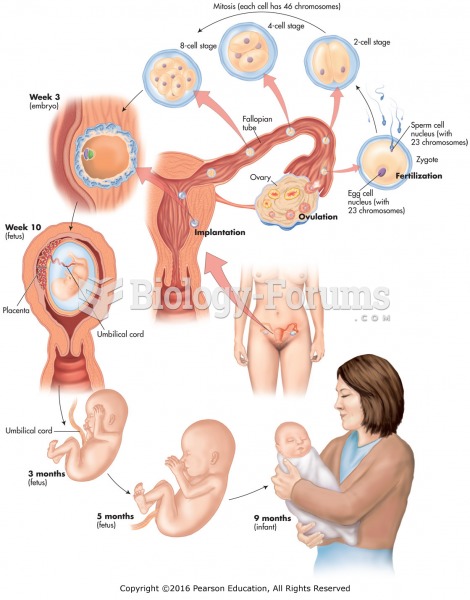|
|
|
The toxic levels for lithium carbonate are close to the therapeutic levels. Signs of toxicity include fine hand tremor, polyuria, mild thirst, nausea, general discomfort, diarrhea, vomiting, drowsiness, muscular weakness, lack of coordination, ataxia, giddiness, tinnitus, and blurred vision.
It is widely believed that giving a daily oral dose of aspirin to heart attack patients improves their chances of survival because the aspirin blocks the formation of new blood clots.
The FDA recognizes 118 routes of administration.
On average, someone in the United States has a stroke about every 40 seconds. This is about 795,000 people per year.
In most cases, kidneys can recover from almost complete loss of function, such as in acute kidney (renal) failure.







